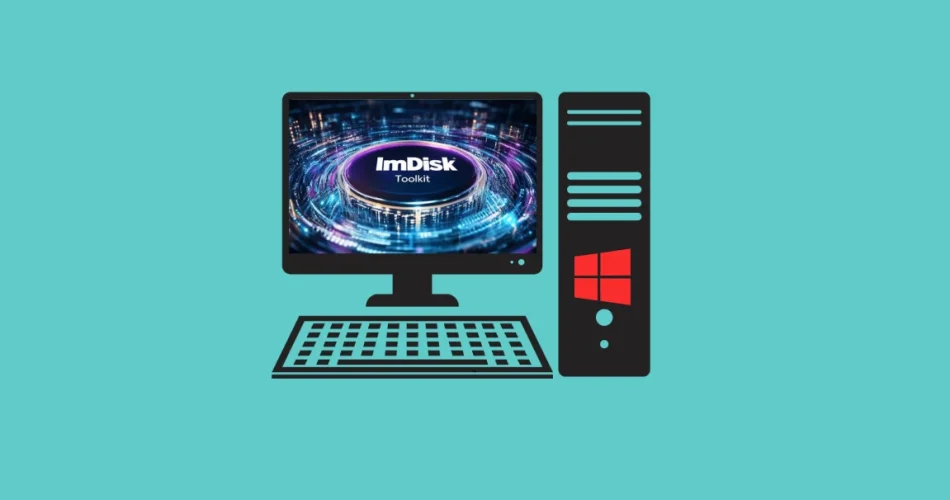If you’re tired of your hard drive slowing down your applications or looking for a hassle-free solution to mount disk images, let me introduce you to ImDisk Toolkit, a small free software that will transform your PC into a true speed demon.
This tool allows you to create an ultra-fast RAM disk in just a few clicks. You can also mount any disk image as easily as opening a folder. And the best part? It’s completely free!
But before diving into the details, let’s talk a bit about RAM disks. Simply put, a RAM disk is a virtual storage space that uses your computer’s RAM instead of a traditional hard drive. The advantage is phenomenal read and write speeds, up to 100 times faster than an SSD! Perfect for speeding up your resource-intensive applications or favorite games.
So how does it work? Let’s start with the installation. Head over to the official site to download the latest version for Windows only. Make sure to choose between the 32 or 64-bit version based on your system. Note that Windows 7, 8, 8.1, 10, or 11 are supported, and some image formats require .NET Framework 4.8 (included by default since Windows 10 1903).
Once installed, you will find a rather intuitive graphical interface that allows you to:
Create RAM Disks:
- Click on “Mount New”
- Choose the desired size (be careful not to be too greedy; it’s your RAM!)
- Select a drive letter
- Choose the file system (NTFS is recommended for large files)
Mount Disk Images:
- Supported formats: ISO, IMG, VHD, and many others
- Ability to mount multiple images simultaneously
- Option to create persistent virtual disks
Manage Your Virtual Disks:
- Hot resize
- Save the current state
- Properly unmount
For developers and tinkerers like me, ImDisk Toolkit is particularly handy. For instance, you can create a dedicated RAM disk for your temporary compilation files, drastically reducing build times. System administrators will also appreciate the ability to quickly mount and test system images.
Practical Tip: To optimize the use of your RAM disks, consider not allocating more than 50% of your total RAM, using NTFS format for better compatibility, activating compression if you’re short on space, and of course, regularly backing up important data (because yes, reminder, RAM is volatile memory!).
The dynamic memory management feature is particularly clever as it allows the RAM disk to automatically adapt according to your needs, much like an accordion that expands and contracts. No more juggling fixed sizes!
For the more adventurous, ImDisk Toolkit also offers a command-line interface. Here are a few examples of useful commands:
imdisk -a -s 2G -m X: -p "/fs:ntfs /q /y" # Creates a 2 GB RAM disk
imdisk -d -m X: # Unmounts drive X:
imdisk -a -f "path/to/image.iso" -m Y: # Mounts an ISO image
And if you’re wondering how to integrate all this into your scripts, here’s a small example that automatically creates a RAM disk at startup:
@echo off
imdisk -a -s 1G -m R: -p "/fs:ntfs /q /y"
if errorlevel 1 (
echo Error during RAM disk creation
pause
exit /b 1)
echo RAM disk created successfully!
The possibilities are really extensive, and all without costing a single cent! In fact, the license is so permissive that you can even use it in a professional context without restriction.
In summary, ImDisk Toolkit is a fantastic tool that deserves a place in your Windows tinkerer arsenal.
And if you'd like to go a step further in supporting us, you can treat us to a virtual coffee ☕️. Thank you for your support ❤️!

We do not support or promote any form of piracy, copyright infringement, or illegal use of software, video content, or digital resources.
Any mention of third-party sites, tools, or platforms is purely for informational purposes. It is the responsibility of each reader to comply with the laws in their country, as well as the terms of use of the services mentioned.
We strongly encourage the use of legal, open-source, or official solutions in a responsible manner.




Comments